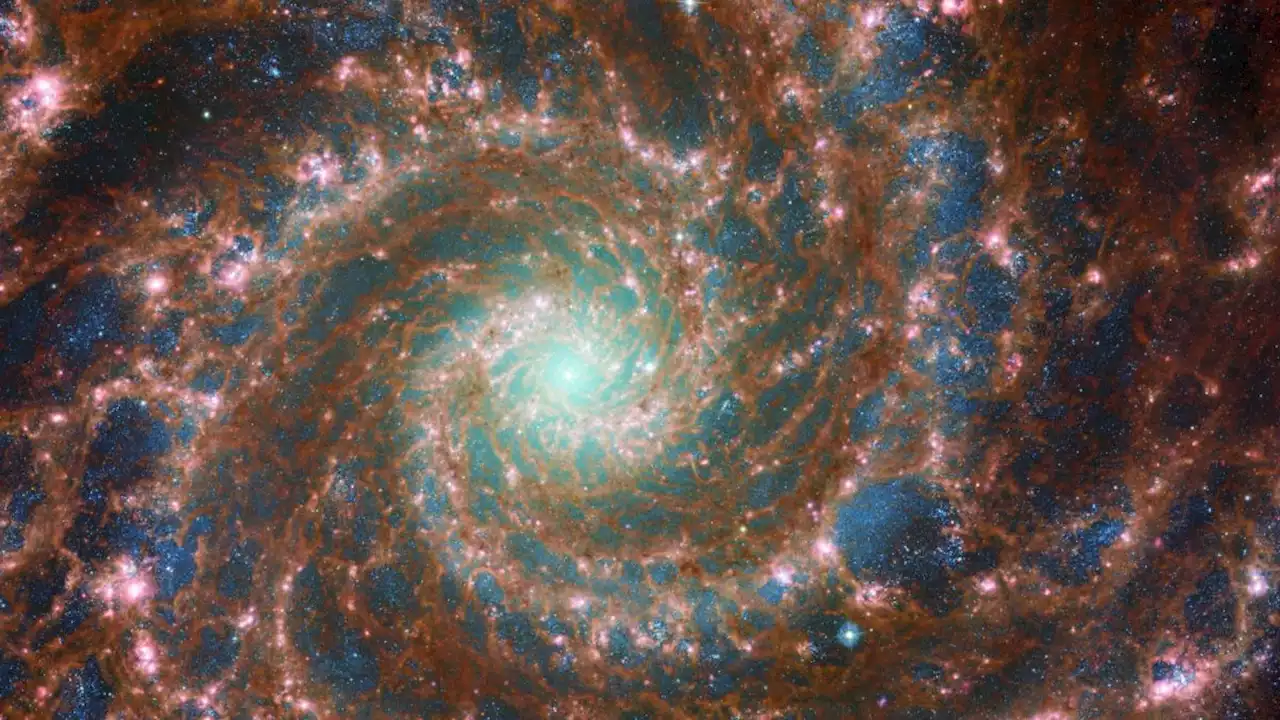'We weren't expecting that.'
The explanation, according to principal investigator Geronimo Villanueva also of Goddard, lies lies in the planet's atmosphere.
"The Hellas Basin is a lower altitude, and thus experiences higher air pressure," Villanueva explained in a NASA. "That higher pressure leads to a suppression of the thermal emission at this particular wavelength range due to an effect called pressure broadening. It will be very interesting to tease apart these competing effects in these data."
You’d think it’d be a no-brainer to point the groundbreaking space telescope, capable of capturing celestial bodies billions of lightyears away, at a planet in our own solar system. But it’s trickier than it sounds. Because the James Webb is so powerful, something as close as Mars is astonishingly bright and overwhelming to its sensors.
To overcome that challenge, NASA astronomers used short exposures so that the images didn’t appear blown out, and used special techniques to analyze the resulting data.
United States Latest News, United States Headlines
Similar News:You can also read news stories similar to this one that we have collected from other news sources.
 James Webb Space Telescope captures its first pictures of MarsThe James Webb Space Telescope spends most of its time staring deep into the universe, but it can also take a look closer to home - as demonstrated by pictures of Mars.
James Webb Space Telescope captures its first pictures of MarsThe James Webb Space Telescope spends most of its time staring deep into the universe, but it can also take a look closer to home - as demonstrated by pictures of Mars.
Read more »
 Mars Is Mighty in First Webb Observations of Red Planet – James Webb Space Telescope
Mars Is Mighty in First Webb Observations of Red Planet – James Webb Space Telescope
Read more »
 James Webb Space Telescope's first pictures of Mars could reveal more about the atmosphere | EngadgetThe JWST has captured its first Mars pictures, and they could reveal more about the planet's atmosphere..
James Webb Space Telescope's first pictures of Mars could reveal more about the atmosphere | EngadgetThe JWST has captured its first Mars pictures, and they could reveal more about the planet's atmosphere..
Read more »
 James Webb Space Telescope captures first images of Mars, and the results are phenomenalWebb can image the entire planet at once in high resolution at a short exposure time, allowing for the study of dust storms, weather patterns and seasonal changes.
James Webb Space Telescope captures first images of Mars, and the results are phenomenalWebb can image the entire planet at once in high resolution at a short exposure time, allowing for the study of dust storms, weather patterns and seasonal changes.
Read more »
 Can the James Webb Space Telescope really see the past?Scientists want to use Webb to see the beginning of the universe. How is that possible?
Can the James Webb Space Telescope really see the past?Scientists want to use Webb to see the beginning of the universe. How is that possible?
Read more »
 James Webb Space Telescope's 1st images of Mars reveal secrets of the Red Planet's atmosphereInfrared images of Mars captured by the space telescope show its surface features and hint at its chemistry.
James Webb Space Telescope's 1st images of Mars reveal secrets of the Red Planet's atmosphereInfrared images of Mars captured by the space telescope show its surface features and hint at its chemistry.
Read more »
